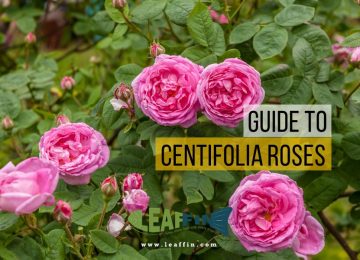the Gerbera is commonly known as the African Daisy. A native plant of South Africa, it grows in well-drained sandy soils. This beautiful member of the Asteraceae family is also known as the Barberton Daisy and the Transvaal Daisy. These names are suggestive of the locations where the plant was first discovered. Botanically, the full name of the African Daisy is Gerbera jamesonii. The genus name “Gerbera” is derived from the family name of the German naturalist, Traugott Gerber while the species was named after Robert Jameson, who was the first to have collected live specimens of the plant.
Gerbera flowers are popular as cut flowers; they are pretty and elegant in their own right. Their daisy-like flowers come in a colorful array of crimson, cream, yellow, orange and pink. The hairy, deeply lobed leaves, which resembles the Garland Chrysanthemum (a steamboat vegetable, commonly called Tang Oh), serves to enhance the brightly coloured blooms. Nowadays, local nurseries carry hybrids both with single or double-petal blooms.
Growing Gerbera plants could be more economical than buying cut flowers in the long run. A well-grown plant will reward you with endless blooms which last longer than those dipped in a vase of water. Guys, if your girlfriend adores Gerbera, consider buying and growing a pot for her; she would certainly be swooned by your sincerity more than receiving a bouquet of cut ones from the florist.
Tips on Growing the Gerbera
Light: Semi shade outdoors. Give about 6 hours of sunlight on a bright windowsill indoors.
Temperature: Does well under local temperatures.
Water: Allow the soil to dry out a little before the next watering. Overwatering leads to crown/root rot. Mist leaves often to discourage spider mites.
Feeding: Give a water-soluble fertiliser regularly for flowering plants to encourage flowering.
Substrate: Well draining potting mix; add river sand to assist drainage.
GROWING CONDITIONS
Gerbera plants grown in locations with insufficient light will not bloom well. If you intend to grow a Gerbera indoors, give the plant as much direct sunlight as you can. Six hours of direct sunlight usually suffice in this case and can be achieved by placing it on a sunny windowsill. Do not try to grow it under office lights, since fluorescent lighting, even if placed within close proximity, don’t seem to give encouraging results.
The Gerbera loves to suntan but it must still be protected from the afternoon sun. The afternoon sun here will very likely fry your plants, hence Gerbera is rarely grown outdoors. They grow pretty fine as potted plants under semi-shaded conditions, like under a shaded verandah or patio, if placed outdoors. Slowly acclimatise your newly bought plants before exposing them to full sun outside.
Gerbera thrive well in well-drained soil. The peaty substrate in which a newly bought Gerbera is grown is not suitable for growing the plant on the long term under local conditions. After the first flowers have wilted, grab the opportunity to change the substrate to one which river sand is added to improve its drainage. Never over water the plant and let the soil dry out a little before watering it again. This is especially important if the plant is grown indoors.
Feed your plants regularly to encourage flowering. You can use a water-soluble fertilizer for flowering plants – those with a high phosphorous (P) and potassium (K) ratio.
Remove spent blooms to encourage further flowering. Remove flower stalks of wilted blooms at the base of the crown, and at the same time remove yellowing leaves, if any, to reduce the possibility of fungus infection.
The Gerbera is extremely prone to red spider mites and one of the most obvious symptoms is distorted young leaves with a puckered appearance. In serious infestations, you can literally see spider webs on the plants and you can also rub off some “red dust” from the undersides of the leaves. It is highly recommended to discard the plant once an infestation sets in. Red spider mites can spread really fast before you can take any action. Miticides are often extremely toxic and are not recommended for use in an environment where there is human traffic. Besides, a bottle of miticide will cost more than a new pot of Gerbera! Prevention is better than cure – mist your plants regularly to increase the humidity which may deter red spider mites.
Other pests include aphids which like to cluster around young growth and whiteflies which are tiny fly-like insects that hide on the underside of leaves. Minor infestations can be treated with thorough washing using a water spray. Alternatively, you can also eradicate these pests by using pyrethrum-based insecticides or soaps. These insects suck sap from the plant, weakening it and are capable of spreading viral diseases from an infected plant to a nearby healthy plant.
Crown and root rots are common due to over-watering and burying the crown in the growing medium.
Plants can be grown from seeds but it will be an exceedingly tedious process. Germination can be tricky since the seeds do not remain viable for long. Give up if you notice no seedlings emerging for more than a fortnight.
A faster and easier method of propagating Gerbera is via division of the crown. The Gerbera will produce numerous suckers, which can be split into many individual plants. In the process of dividing the plant, try to give each sucker some roots and be as careful as you can so as to minimize any damage to the plant. You may find it necessary to cover the divided plants with a clear plastic bag to reduce moisture loss.


